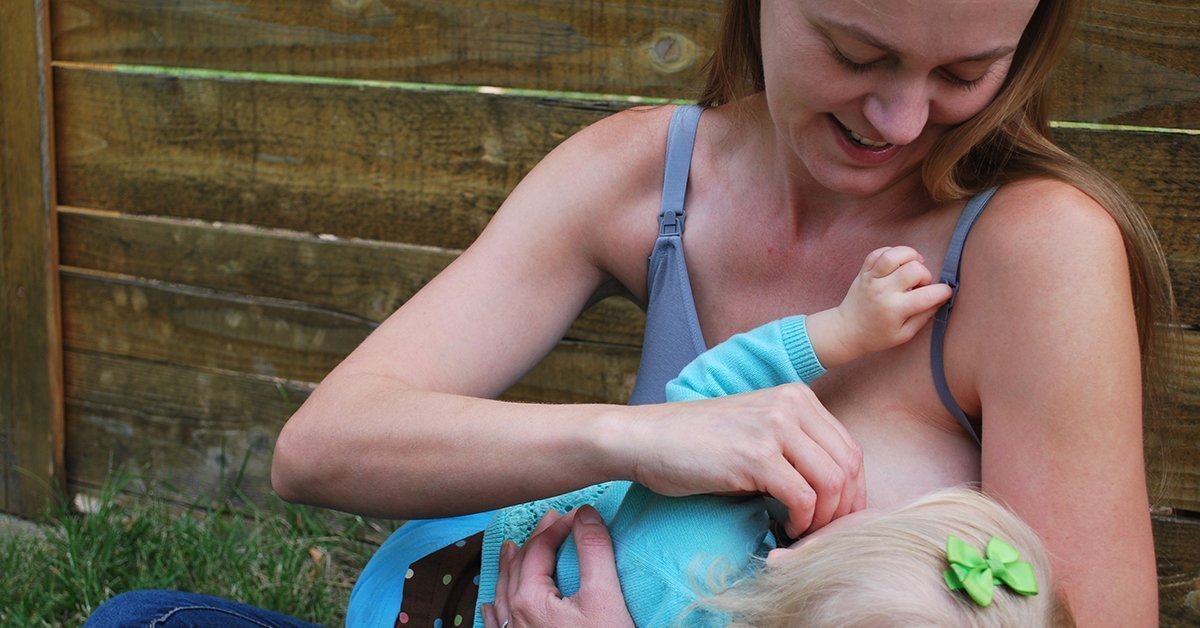Breastfeeding a new baby can be very uncomfortable for some. Just take a moment to think about it- a very tender area (your nipples) are all of a sudden getting constantly stimulated with yanking, pulling, and suckling! Sure, they will be sore and tender to the touch at first. However, it should never be painful. Pain is a sign that something is not quite right and should be checked out by a qualified lactation professional. Feel free to follow the links below to find the right support for you in your area!
- Board Certified Lactation Consultants near you
- La Leche League Support Groups near you
When a medical issue is not the reason for a painful latch, easing the common discomfort of breastfeeding can be done on your own by ensuring a proper, deep latch and using a variety of therapy products.
Signs of a proper latch:
- Nose to chin
- When inserting breast into baby’s mouth, go from nose to chin and roll in the nipple
- Fish Lips
- Baby’s lips should be rolled outward
- Baby’s lips should be in as much contact as possible with the areola
- Little areola should be showing (depending on size)
- Suction
- Baby’s cheeks should appear full
- You should not hear clicking noises or see dimpling on cheeks
- Baby's Cues
- Baby is relaxed at the breast, no longer fussing
- Baby is not pulling off the breast
Once you have the basics of latching down, the positioning baby properly also helps increase breastfeeding comfort.
Proper positioning:
- Is your baby focused and ready to feed?
- Does baby like to be swaddled or unswaddled?
- Are they displaying hunger cues?
- Tummy to tummy
- Baby’s tummy should be facing mom’s tummy when feeding
- Baby’s head should be straight on to breast, no turning necessary
Need some help recovering from the early days of breastfeeding? Nipple balm and therapy pillows are the perfect remedy!



2 comments
My first had an upper lip tie that both the hospital pediatrician and lactation consultant missed. They kept saying that they didn’t understand why he was latching poorly. I was sent home with a nipple guard and instructioned to do triple feeding. I suffered with his poor latch for 3 months before we found it!
The second time around we knew what to look for when my daughter was latching poorly and was able to get it clipped right in the hospital. Instantly better latch!I’m convinced sometimes it just varies by kid!
My first hurt to latch every single time. She nursed until she was 19 months old. I went to 4 different lactation consultants. It was miserable.
My second, I have not had a day of pain with her!
Recently, my 2 year old asked to latch again, and I figured “why not, she’s probably jealous of her sister.” I was sore for 2 days after that! She’s not allowed to latch anymore :(.
I do everything the same with both of them. I’m so glad #2 has been so much easier!